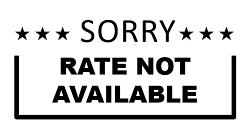Regardless of what a lender quotes on mortgage rates, the actual rate a borrower pays is based on a number of variables. Lenders determine whether to loan money and at what rate based on the risk involved with the transaction.
Factors that increase the risk that the loan will be repaid will proportionately increase the interest rate charged to the borrower. If the risk becomes too high, the loan will not be approved.

Factors that increase the risk that the loan will be repaid will proportionately increase the interest rate charged to the borrower. If the risk becomes too high, the loan will not be approved.
- Loan amounts – conventional mortgages above conforming limits as set by Fannie Mae and Freddie Mac are considered jumbo loans and generally have a higher interest rate.
- FICO score – the lowest interest rate is reserved for the highest score; the lower the score, the higher the rate the borrower will pay.
- Occupancy – borrowers occupying a home as their principal residence are considered a better loan risk than second homes and investment properties.
- Loan purpose – purchase transactions generally have the lowest interest rate with refinancing for better rates and terms being priced slightly higher. An even higher rate might be charged for refinancing and taking cash out of the property.
- Debt-to-Income Ratio – a borrower’s monthly liabilities divided by their gross monthly income develops a ratio that helps lenders to assess the borrower’s ability to repay the mortgage.
- Property Type – some types of property are considered higher risk than others which could adversely affect the rate.
- Loan-to-value – the lower the percentage of the loan to the appraised value of the property will generally lower the interest rate.
 |
No comments:
Post a Comment